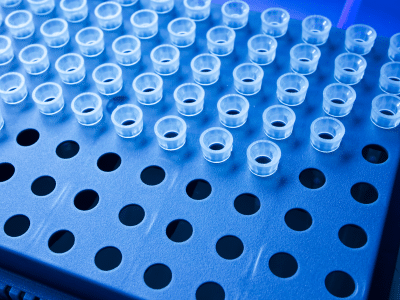You want to replace your laboratory equipment and your boss wonders if the time is right… Your centrifuge is not working properly, the sampling chair is very tired, you are looking for arguments to convince your laboratory boss to replace your equipment. However, lack of availability from the manufacturer, prices that have been skyrocketing in recent months, exploding energy bills, the desire to make your equipment last longer to also take care of the environment… the reasons to repair rather than reinvest in laboratory equipment are numerous, yet there are at least 5 situations in which it is better not to compromise, especially when the condition of your equipment is jeopardizing the performance of the analytical activity.
Safety is at stake: the argument that counts for replacing laboratory equipment
Safety is the top priority of any laboratory owner. So the safety argument will work. That’s good, because depending on their severity, safety problems are probably the clearest sign that an instrument needs to be replaced.
However, an isolated malfunction is not necessarily a reason for replacement. Instead, look for repeated malfunctions or escalating problems. For this reason, it is vital to ensure that maintenance and repair records for all equipment are kept current.
Your laboratory manager will certainly review instrument records regularly to identify any trends. If repairs become more frequent or severe over time, the equipment in question is probably unreliable and should be taken out of service as soon as possible.
He is also likely to be very sensitive to communications from manufacturers and won’t miss a product recall (neither will you!) Design flaws can lead to sudden and unexpected problems. Therefore, it is important to be aware of product recalls to promote safety in the lab.
The reliability of the result is at risk: plead for the replacement of your laboratory equipment
While some equipment problems may be hazardous to you, the lab technician, others may cause risks further down the analytical workflow. For example, a hematology machine that returns inaccurate results will obviously not affect your colleagues who technician the sample, but it will certainly affect the diagnosis and treatment of the patient. In the case of research laboratories, inaccurate analyses can invalidate trials, hindering the research process and wasting money. We don’t know of a laboratory executive who is not sensitive to this argument.
Spare parts are in short supply: time to invest in new laboratory equipment
If spare parts for your equipment are not available directly from the manufacturer, it may be difficult to find them from other suppliers. Of course you and your colleagues can search for long hours for the right part on the net, of course you can – if you manage to buy that famous part – repair the instrument or equipment yourself… But during the time spent crawling online sales sites, machine downtime runs short and productivity continues to plummet. Low productivity is certainly an additional argument to convince your lab manager that if it may seem more expensive at first to replace a piece of lab equipment, it will probably be more profitable in the medium and long term.
Your laboratory instrument is energy-consuming: it may be worthwhile to replace it
The price of energy is exploding. At home and in the laboratory, the race to save electricity is on everywhere. When the entire production chain of a patient’s report is linked to this essential expense, it is certainly worth the effort and the cost to rethink the investment in equipment with your laboratory manager in a more global way. From now on, such an investment is not only examined at the level of the machine itself, but also at the level of its entire environment, and in particular its energy consumption or sobriety.
Today, laboratory equipment has become much more energy efficient. For example, many centrifuge rotors are now made of carbon fiber rather than aluminum or titanium, so acceleration and deceleration phases are faster and run times are shorter. Investing in a new centrifuge therefore reduces the lab’s electricity bill. ULT freezers use hydrocarbon-based refrigerants, such as methane, which provide more efficient cooling than older hydrofluorocarbon-based refrigerants. As a result, the new generation of laboratory equipment offers substantial electricity savings. Depending on the age of your equipment and how often you use it, it may be more cost-effective to purchase a newer, more energy-efficient model than to repair your current lab equipment. What lab manager won’t appreciate such a powerful argument as operational savings from energy conservation?
Who wants to travel far spares his mount…but
Of course, laboratory materials and equipment are designed for the long term and of course you have to take great care of them and maintain them with great attention. Of course, by carefully maintaining your equipment you contribute to its longevity and no major repairs are needed for a long time.
But if your equipment requires frequent repairs, which regularly disturb the analytical flow, and which, when put together, the repair costs are close to those of a new purchase, don’t hesitate, go for it!
You now have all the arguments in hand to convince your laboratory manager.
If he agrees to replace your centrifuge, your oven, your refrigerator, your sampling chair, your laboratory balance, or any other instrument or laboratory equipment, let us know: fill in this form, we know a team of experts who will be delighted to offer you the equipment that corresponds to your lab’s budget and needs.




